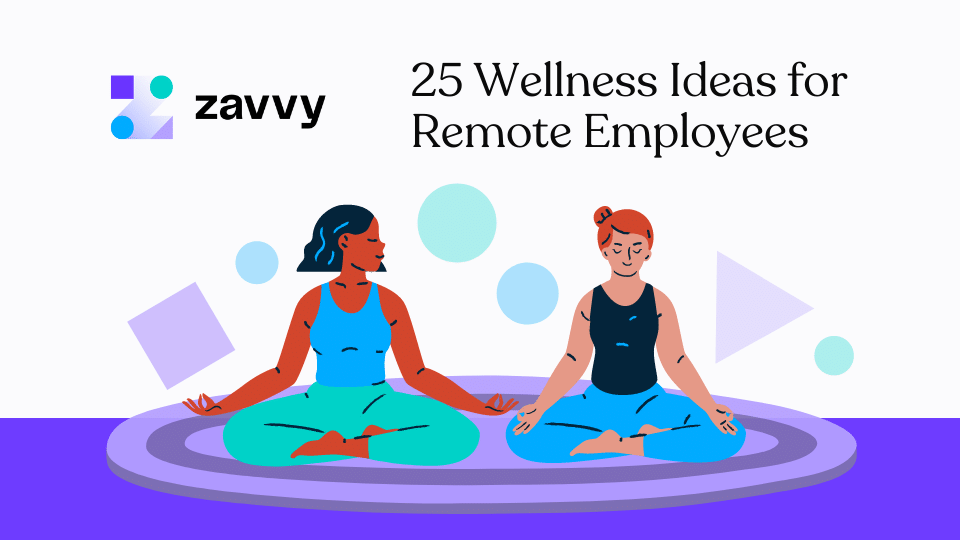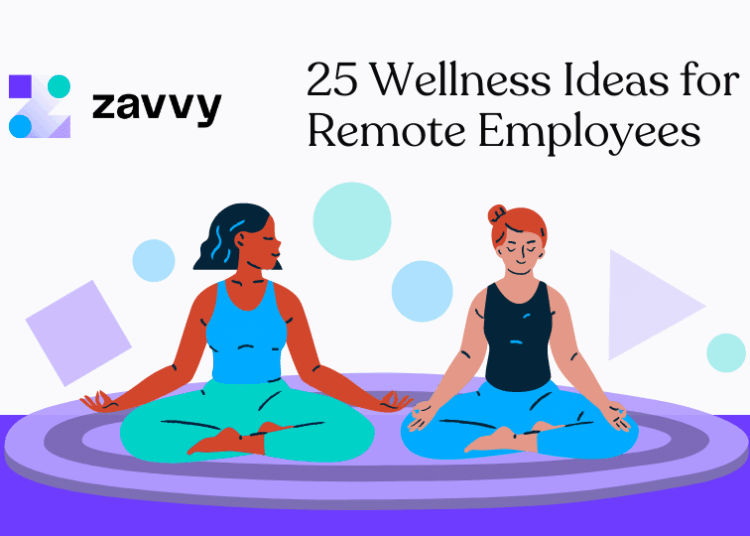Exploring the realm of corporate wellness strategies for remote teams, this introduction delves into the importance of prioritizing employee well-being in a virtual work environment. From the design of effective wellness programs to communication strategies and monitoring methods, this discussion aims to provide a comprehensive guide for organizations looking to optimize the health and engagement of their remote workforce.
Importance of Corporate Wellness for Remote Teams

Corporate wellness is vital for remote teams as it plays a significant role in ensuring the overall well-being and productivity of employees working from different locations.
Benefits of Implementing Wellness Strategies for Remote Employees
- Improved Mental Health: Remote work can often lead to feelings of isolation and burnout. By implementing wellness strategies, such as mental health resources and virtual support groups, employees can feel more connected and supported.
- Increased Productivity: When employees are healthy and well-balanced, they are more likely to be productive and engaged in their work. Wellness programs can help remote workers stay focused and motivated.
- Enhanced Employee Engagement: Wellness initiatives can boost employee morale and create a sense of community among remote teams. This can lead to higher levels of engagement and collaboration.
- Reduced Absenteeism: By promoting healthy habits and stress management techniques, companies can help reduce absenteeism among remote employees. This, in turn, can lead to better overall team performance.
Impact of Remote Work on Employee Well-being
- Work-Life Balance: Remote work blurs the lines between work and personal life, making it challenging for employees to disconnect. This can result in increased stress and burnout if not managed properly.
- Physical Health: Sitting for extended periods and lack of movement can negatively impact physical health. Implementing wellness strategies that encourage regular exercise and healthy habits can help combat these issues.
- Communication Challenges: Remote work can sometimes lead to communication breakdowns and feelings of isolation. Wellness initiatives that focus on improving communication skills and fostering a sense of belonging can address these challenges.
- Mental Well-being: The lack of face-to-face interaction and social connections in remote work settings can affect mental well-being. Providing access to mental health resources and promoting work-life balance can support employees' mental health.
Designing Effective Corporate Wellness Programs
When it comes to designing corporate wellness programs for remote teams, it's important to consider activities that can be engaging and beneficial for employees working from different locations. Here are some examples of wellness activities suitable for remote teams:
Virtual Fitness Classes
One way to promote physical wellness among remote employees is by offering virtual fitness classes. This can include yoga sessions, HIIT workouts, or even dance classes that employees can participate in from the comfort of their homes.
Mental Health Workshops
Remote work can sometimes lead to feelings of isolation or burnout. Providing mental health workshops or seminars can help employees cope with stress, anxiety, and other mental health issues. These workshops can cover topics like mindfulness, stress management, and work-life balance.
Nutrition Challenges
Promoting healthy eating habits is essential for overall wellness. You can organize nutrition challenges where employees are encouraged to eat more fruits and vegetables, stay hydrated, or prepare nutritious meals. This can help improve their energy levels and overall health.
Virtual Team Building Activities
Building a sense of community among remote employees is crucial for team cohesion. Virtual team building activities such as online games, trivia quizzes, or group challenges can help employees connect with each other and foster a positive work environment.
Tips for Creating Engaging Virtual Wellness Initiatives
- Utilize interactive platforms and tools to make wellness activities more engaging and interactive.
- Encourage employees to share their wellness goals and progress with their colleagues to create a sense of accountability and support.
- Offer incentives or rewards for employees who actively participate in wellness programs to motivate them to take better care of their health.
- Survey employees regularly to gather feedback on the effectiveness of wellness initiatives and make necessary adjustments based on their preferences.
Communication and Engagement Strategies
Effective communication and engagement are key components of successful corporate wellness programs for remote teams. By utilizing the right strategies, you can ensure that your employees stay informed, motivated, and actively participate in wellness initiatives
Effectively Communicating Wellness Initiatives
- Utilize multiple communication channels such as email, virtual meetings, and internal messaging platforms to reach remote employees.
- Clearly Artikel the goals, benefits, and schedule of wellness programs to ensure understanding and buy-in from team members.
- Provide regular updates and reminders about upcoming wellness activities to keep employees engaged and informed.
Encouraging Active Participation Virtually
- Offer a variety of wellness activities to cater to different interests and preferences of remote employees.
- Implement challenges, competitions, or rewards to motivate employees to participate in wellness programs actively.
- Encourage team members to share their progress, tips, and success stories to create a sense of community and accountability.
Best Practices for Maintaining Employee Engagement
- Assign wellness ambassadors within remote teams to serve as advocates and motivators for wellness initiatives.
- Provide opportunities for virtual social interactions related to wellness, such as virtual workout sessions or healthy cooking classes.
- Solicit feedback from employees regularly to assess the effectiveness of wellness programs and make necessary adjustments to keep engagement high.
Monitoring and Measuring Wellness Programs

Monitoring and measuring the effectiveness of corporate wellness programs for remote teams is crucial for ensuring the well-being and productivity of employees. By tracking key metrics and analyzing feedback, organizations can make data-driven decisions to improve their wellness strategies.
Methods for Tracking Wellness Programs
- Utilize employee surveys to gather feedback on the impact of wellness initiatives.
- Track participation rates in wellness activities or programs to gauge employee engagement.
- Monitor absenteeism rates to assess the overall health and wellness of remote employees.
- Use digital platforms and tools to collect data on employee well-being, such as fitness apps or wellness portals.
Key Metrics for Evaluating Wellness Initiatives
- Health outcomes, such as changes in blood pressure, cholesterol levels, or BMI.
- Employee engagement levels and satisfaction with wellness programs.
- Productivity metrics, including work performance and task completion rates.
- Retention rates and employee turnover related to well-being initiatives.
Importance of Feedback and Data Analysis
Feedback from employees is essential for understanding the impact of wellness programs and identifying areas for improvement. By analyzing data collected from surveys, participation rates, and health outcomes, organizations can tailor their wellness strategies to better meet the needs of remote employees.
Continuous feedback loops and data analysis are key in driving the success of corporate wellness initiatives for remote teams.
Final Thoughts

In conclusion, fostering a culture of wellness among remote teams is not just a trend but a necessity in today's dynamic work landscape. By implementing thoughtful strategies and maintaining open communication channels, companies can ensure the holistic well-being of their employees while boosting productivity and morale.
FAQ
How can remote teams benefit from corporate wellness programs?
Corporate wellness programs can help remote teams improve their overall health, productivity, and job satisfaction by providing resources and activities that support physical, mental, and emotional well-being.
What are some effective ways to encourage active participation in virtual wellness programs?
Engaging remote employees in wellness programs can be achieved through incentives, gamification, regular communication, and tailored activities that cater to their individual needs and interests.
Why is monitoring and measuring wellness programs important for remote teams?
Tracking the effectiveness of wellness initiatives allows organizations to identify areas for improvement, assess employee engagement levels, and demonstrate the impact of these programs on overall team health and performance.









